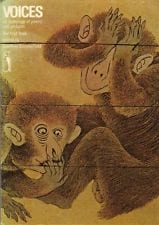As anticipated our aim for this week was to focus on a one minute performance relating to the painting and tasks we were set.
My painting was called ‘Scene’ and it was created by a seven year old child. Further research of this painting helped me understand other people interpretations, and although they were different to my initial ones it still gave me an insight into how a piece of art can communicate differently. Although the child’s gender that created this particular piece wasn’t disclosed, it didn’t matter. It still portrayed to me the innocence of children, and this was my main focus as it was relatable.
A Man of Words and Not of Deeds by Percy B. Green (1897 – 1977) was what instantly sprung to mind when I was set the tasks. Perhaps this was a flaw, I went with my first instinct and chose to expand on this, and perhaps I should have been more open to new ideas when researching an idea for my performance. The poem goes as follows;
A man of words and not of deeds
Is like a garden full of weeds
And when the weeds begin to grow
It’s like a garden full of snow
And when the snow begins to fall
It’s like a bird upon the wall
And when the bird away does fly
It’s like an eagle in the sky
And when the sky begins to roar
It’s like a lion at the door
And when the door begins to crack
It’s like a stick across your back
And when your back begins to smart
It’s like a penknife in your heart
And when your heart begins to bleed
You’re dead, and dead, and dead indeed.
Voices: Bk. 1: An Anthology of Poetry and Pictures, by Ed. Geoffrey Summerfield 1970.
I first discovered this poem when I was a child, it appeared in a poetry book called Voices that was passed on to me from my mother and it’s very dear to me. I used this personal relationship with the poem to put across what I remembered as a child. Although it starts off as a light hearted nursery rhyme, it then becomes very dark and sinister. This is what portrays childhood perfectly for me, the innocence and ignorance to life’s real issues and then all of a sudden it all becomes apparent as we get older.
Watching my peers’ performances also gave me an insight in what I perhaps wanted to focus on more, and the different paths they went down were enlightening. It’s unusual how a certain space can change the atmosphere of a piece and this also helped me evaluate my work. I honestly believe I focused too much on a personal influence, and my performance was not true to the site. I get that this is a learning curve, and all this is very new to me, so I’m glad that I was able to reflect and see the differences I’d want to make. Although my monologue and the use of a poem had no historical significance, I don’t know how important this is. I chose to do the more creative side; I understand that the museum is a preserver of history but I’m far more passionate about the emotions and feelings behind a piece of art or artefact then the actual facts. This could just be very ignorant of me.
References:
Voices: Bk. 1: An Anthology of Poetry and Pictures, by Ed. Geoffrey Summerfield 1970.

Recent Comments